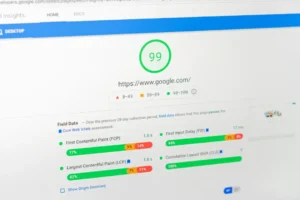
Understanding Influencer Marketing
Influencer marketing is a strategic approach that leverages the reach and credibility of individuals with substantial followings on various digital platforms to promote products or services. In a world increasingly dominated by digital communications and social media, the significance of this marketing tactic cannot be overstated. As brands seek to connect with their target audiences in a more authentic manner, influencer marketing has emerged as a pivotal strategy that drives engagement, brand awareness, and conversions.
Influencers can be categorized into different tiers based on their follower counts and engagement levels. Micro influencers, typically characterized by a following ranging from 1,000 to 100,000, tend to have high engagement rates and tightly-knit audiences. Their niche authority allows brands to reach targeted consumer segments effectively. On the other hand, macro influencers have followings from 100,000 to 1 million and may offer broader reach but often with lower engagement rates relative to their follower size. Lastly, mega influencers, who possess over 1 million followers, can provide substantial visibility but may lack the personalized connection that smaller influencers can cultivate.
The impact of influencer marketing is profound, as brands can enjoy increased credibility and enhanced visibility through authentic endorsements. By collaborating with key opinion leaders (KOLs), brands not only tap into their established trust with audiences but also gain access to niche markets that can lead to significant growth. The ability to sway consumer behavior through curated content and genuine experiences is a primary driver behind the adoption of influencer strategies. This alignment between brands and influencers is crucial, as it creates synergistic partnerships that benefit both parties while fostering consumer loyalty. The evolving digital landscape only emphasizes the importance of employing influencer marketing as a core component of any modern marketing strategy.
Identifying the Right Key Opinion Leaders (KOLs)
In the realm of influencer marketing, identifying the right Key Opinion Leaders (KOLs) is pivotal for establishing successful collaborations that resonate with target audiences. To select suitable KOLs, brands should first evaluate niche relevance, ensuring that the influencers operate within the same industry or market segment. This aligns the KOL’s influence with the brand’s offerings, resulting in more authentic promotion and higher conversion potential.
Furthermore, understanding audience demographics is crucial. Brands must assess if the KOL’s followers match their own target market in terms of age, gender, location, and interests. Utilizing analytical tools can provide insights into influencer performance metrics and follower characteristics. This data allows brands to make informed decisions about which KOLs have the best potential to reach and engage their desired consumers effectively.
Engagement levels are another significant factor to consider. A KOL with a smaller following but high engagement rates may deliver better results than one with a vast audience but low interaction. Evaluating metrics such as likes, comments, shares, and overall sentiment towards the KOL’s content can provide a clearer picture of influencer effectiveness. Brands should prioritize partners who cultivate genuine relationships with their followers, as this fosters trust and increases the chance of positive reception towards brand messages.
Moreover, it is vital for brands to ensure that their values align with those of the selected KOLs. Authenticity in influencer marketing hinges on shared values and beliefs between the brand and the influencer, which can lead to more credible endorsements. Finally, leveraging various platforms and tools designed for discovering and evaluating KOLs will streamline the process and offer comprehensive resources that guide brands in building strong collaborations.
Researching and Vetting Potential Influencers
Influencer marketing has become a cornerstone of modern brand promotion, particularly through key opinion leaders (KOLs) who have established trust and resonance with their audiences. However, the success of influencer campaigns hinges significantly on the thorough research and vetting of potential collaborators. When beginning this process, brands must examine the influencer’s previous collaborations to ensure they have a history of successful partnerships. This examination offers insight into their professionalism and the brands they are drawn to, which can reflect their alignment with your own.
Another critical factor in this evaluation is assessing the authenticity of an influencer’s engagement. Metrics such as likes, comments, and shares should not only be observed in quantity but also in quality. Irregular engagement or a disproportionate follower count relative to interaction can indicate a lack of genuine reach. Tools like social media analytics platforms can provide deeper insights into follower demographics and engagement statistics, allowing brands to identify influencers who truly engage with their audience rather than simply promoting a facade.
Aligning an influencer’s content style and messaging with the brand’s identity is equally important. Influencer marketing thrives on authentic connections; thus, the collaborator’s tone, style, and values should resonate with those of the brand. A misalignment can lead to ineffective campaigns that fail to connect with target audiences. Brands should review an influencer’s content strategies, including their usual topics and aesthetic, to ensure they complement the brand’s vision and mission, thereby creating a cohesive narrative through carefully structured collaborations.
In the ever-evolving landscape of influencer marketing, these thorough research and vetting strategies will ultimately empower brands to choose the right KOL collaborators, enhancing the potential for effective marketing outcomes.
Crafting Your Outreach Strategy
In the realm of influencer marketing, developing an effective outreach strategy is essential for establishing fruitful partnerships with key opinion leaders (KOLs). A well-thought-out approach not only amplifies your brand message but also enhances the likelihood of securing engaging collaborations. The first step in this process is crafting a personalized pitch that underscores mutual benefits for both parties involved.
Begin by thoroughly researching the influencer you aim to connect with. Understanding their audience, niche, and previous collaborations will enable you to tailor your message to align with their style and values. Highlight how the proposed partnership can benefit them, such as increased engagement or access to exclusive content, while also emphasizing what makes your brand unique and relevant to their audience.
When composing your outreach email or message, ensure you include essential information about your brand and the specific collaboration you have in mind. Be concise yet informative, detailing the goals, expectations, and possible compensation or incentives. Clarity is crucial; KOLs often receive numerous collaboration requests, so making your proposal stand out is vital.
Fostering genuine relationships is another cornerstone of successful outreach strategies in influencer marketing. Engage with the influencers by commenting on their posts, sharing their content, or even participating in their live events. This engagement showcases your authenticity and investment in their work, thus reinforcing a potential partnership.
Moreover, timing plays a significant role in outreach efforts. Consider reaching out during periods when KOLs are actively seeking new collaborations, such as during product launches or seasonal campaigns. Lastly, do not underestimate the importance of follow-up. If you do not receive a response within a reasonable timeframe, a gentle reminder can keep the conversation alive and demonstrate your commitment to collaborating with them.
Building Successful Collaboration Agreements
In the realm of influencer marketing, establishing a solid framework for collaboration agreements is critical to the success of any campaign. When brands partner with key opinion leaders (KOLs), a well-structured agreement lays the foundation for a mutually beneficial relationship that meets the objectives of both parties involved. One of the essential components of these agreements is the payment structure. Depending on the influencer’s reach and the scope of the campaign, compensation can vary widely. It is vital to outline whether influencers will be compensated through monetary payments, product gifting, or performance-based incentives, thus ensuring clarity on this front from the outset.
Equally important are the deliverables, which detail what the influencer is expected to produce during the campaign. This may include the number of posts, types of content (such as videos, blogs, or social media stories), and any required hashtags or brand mentions. By specifying these deliverables, companies can better ensure that their marketing goals are met while enabling influencers to navigate their creative processes effectively. Additionally, establishing timelines is crucial; setting clear deadlines for content submission and release dates helps maintain accountability and prevents delays that could negatively impact the campaign.
Another vital aspect of collaboration agreements is the inclusion of exclusivity clauses. These clauses may prevent influencers from collaborating with competing brands during the campaign period, ensuring that the brand’s message remains authentic and undiluted. Beyond the contractual details, fostering a culture of open communication throughout the influencer marketing process is paramount. Both brands and influencers must align on expectations to mitigate misunderstandings and ensure that everyone is working towards the same goal. It is through diligent planning and clear agreements that successful collaborations can ultimately flourish.
Creating Meaningful Content Together
Influencer marketing serves as a powerful tool for brands looking to enhance their reach and establish authenticity through collaboration with key opinion leaders (KOLs). The process of co-creating content is critical and requires a balanced approach that respects both the brand’s messaging and the influencer’s unique voice. To achieve this harmony, it’s essential to initiate brainstorming sessions that encourage open dialogue while focusing on ideas that resonate with the KOL’s audience and align with the brand’s objectives.
Effective collaboration starts with understanding the audience of the KOL. Brands should conduct thorough research on the influencer’s followers, including their demographics, interests, and engagement patterns. This understanding informs the development of content ideas that not only appeal to the audience but also reflect the core messages of the brand. It’s beneficial to brainstorm topics that allow KOLs to apply their expertise and perspective, resulting in authentically produced content that captures the interest of their followers.
Providing creative freedom is vital to the success of the collaboration. Influencers possess a keen instinct for what will resonate with their audiences; thus, allowing them to embrace their creative process can lead to more genuine and compelling content. Brands should refrain from exerting excessive control over the content, instead offering guidelines that outline key messages while allowing room for personal expression. This approach fosters an authentic connection, which is central to effective influencer marketing.
Monitoring content production is equally important in this collaborative effort. Brands should engage in regular check-ins during the creative process, offering constructive feedback that supports the KOL’s vision without stifling creativity. Encouraging an environment where feedback is viewed as a positive contribution helps strengthen the partnership. The outcome of this collaboration should not only represent the brand’s message but also reflect the influencer’s personality, leading to impactful and meaningful content.
Measuring the Success of Influencer Campaigns
Measuring the success of influencer marketing campaigns is crucial for brands to understand the effectiveness and ROI of their initiatives. To achieve this, it is essential to establish clear Key Performance Indicators (KPIs) that align with the campaign objectives. Common KPIs to consider include engagement rates, reach, conversions, and overall return on investment.
Engagement rates refer to the level of interaction that the audience has with the influencer’s content, including likes, comments, and shares. This metric is vital as it reflects the audience’s interest and the content’s ability to resonate with the target demographic. Furthermore, reach measures the total number of unique users who have come across the influencer’s posts, thereby providing insights into potential brand visibility.
Conversions are another significant metric, representing the number of users who take a desired action, such as making a purchase or signing up for a newsletter, after engaging with the influencer’s content. This metric helps brands ascertain the effectiveness of the influencer’s persuasion and the campaign’s impact on sales or leads. Similarly, calculating the return on investment (ROI) is essential to determine the financial profitability of the influencer marketing endeavor, allowing brands to assess whether the campaign delivered value compared to its costs.
To effectively analyze these metrics, brands should utilize various tracking tools that provide comprehensive analytics and reporting. Social media platforms often have built-in analytics, while third-party tools can offer more specialized insights. By gathering data and evaluating the campaign performance, brands can identify trends and patterns that inform future kol collaboration strategies. This ongoing analysis enables companies to refine their influencer marketing approaches and optimize future campaigns, ultimately leading to more successful outcomes.
Maintaining Long-term Relationships with Influencers
In the realm of influencer marketing, the development of long-term relationships with Key Opinion Leaders (KOLs) is paramount for brands aiming to foster authenticity and sustained engagement. Rather than focusing solely on short-term campaign collaborations, brands can benefit significantly from nurturing continuous partnerships with influencers. This strategic approach not only enhances the credibility of brand endorsements but also cultivates greater loyalty among the influencer’s audience.
One effective way to build enduring relationships is through consistent communication. Regularly checking in with influencers to share updates, seek feedback, or simply engage in conversation fosters a sense of partnership. By keeping the lines of communication open, brands can address any concerns and adapt their collaboration strategies, ensuring that both parties feel valued and appreciated. This ongoing dialogue lays the groundwork for meaningful interactions that can yield richer campaign outcomes.
Moreover, recognizing and celebrating the contributions of influencers is crucial. Acknowledgment can take various forms, such as public shout-outs on social media, featuring influencers in brand content, or highlighting their achievements in marketing materials. Such recognition not only boosts the influencer’s profile but also demonstrates the brand’s commitment to their success. Supporting an influencer’s personal brand can further enhance this relationship; brands can collaborate on co-branded initiatives or provide opportunities that align with the influencer’s values and goals.
Ultimately, investing time and resources into maintaining long-term relationships with KOLs through consistent engagement and support can lead to more authentic brand endorsements. These cultivated partnerships hold the potential for extended reach and impact, allowing brands to effectively leverage influencer marketing strategies for greater loyalty and resonance within the target audience.
Future Trends in Influencer Marketing
As the digital landscape evolves, so too does the practice of influencer marketing, propelling forward innovative kol collaboration strategies and emerging trends. One of the most significant developments in recent years has been the rise of virtual influencers—computer-generated characters designed to embody lifestyle and brand values. These digital personas offer brands unprecedented control over their image and content, free from some of the unpredictabilities associated with human influencers. Brands can leverage virtual influencers to craft highly tailored campaigns that resonate with tech-savvy audiences seeking fresh and unique experiences.
Another trend gaining traction in influencer marketing is the integration of social commerce. As consumers increasingly turn to social media platforms for shopping, collaboration with key opinion leaders (KOLs) has become essential for brands aiming to facilitate this experience. By promoting products directly within social channels through relatable content, influencers can bridge the gap between inspiration and transaction. Brands that embrace social commerce will need to rethink their kol collaboration strategies, focusing on authenticity and providing seamless shopping experiences that cater to consumers’ evolving preferences.
Shifting audience expectations also play a crucial role in shaping the future of influencer marketing. Modern consumers demand transparency, authenticity, and genuine engagement from brands and their endorsers. To meet these demands, brands must adapt by investing in long-term partnerships with influencers who align closely with their values rather than opting for one-off promotional posts. Furthermore, an emphasis on storytelling and community-building will be critical in maintaining audiences’ trust and loyalty. As influencer marketing continues to transform, brands that remain agile and innovative will be well-positioned to capitalize on new opportunities for collaboration with Key Opinion Leaders.








